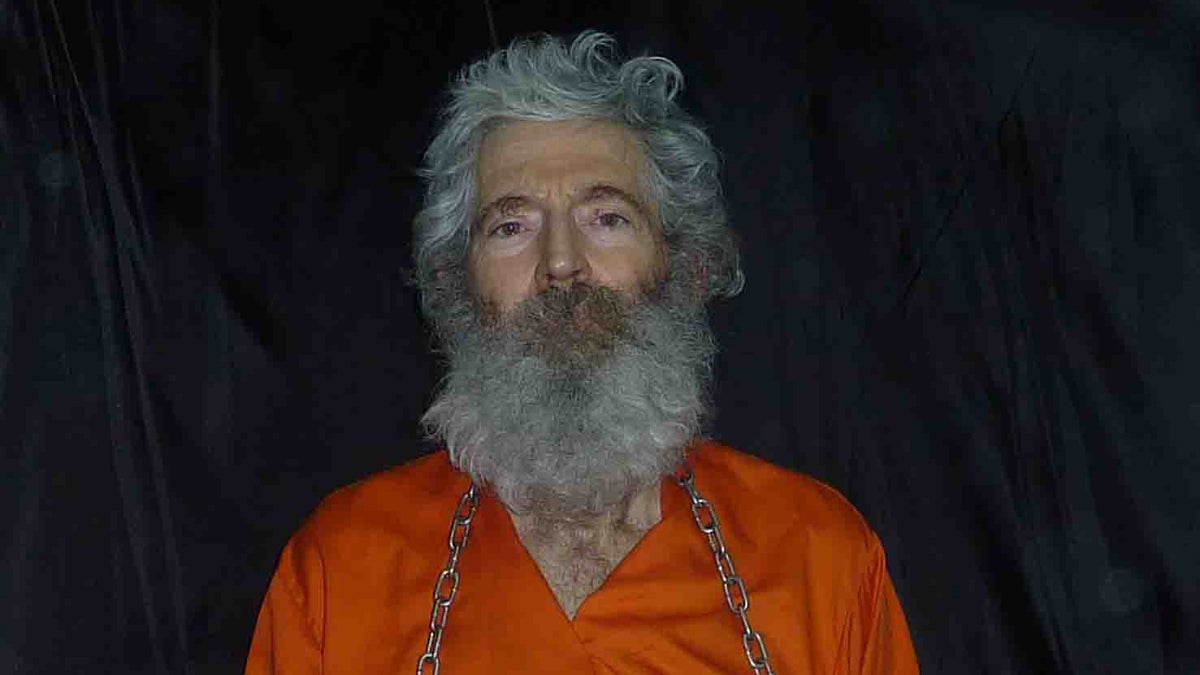CIA scandal scoop: Run it or sit on it?

This undated photo provided by the family of Robert Levinson, shows retired-FBI agent Robert Levinson in a photo the family received in April 2011. In March 2007, Levinson flew to Kish Island, an Iranian resort. Days later after a meeting with an admitted killer, he vanished. For years the U.S. has publicly described him as a private citizen who was traveling on private business. However, an Associated Press investigation reveals that Levinson was working for the CIA. (Levinson Family/AP Photo)
When the U.S. government tries to kill a media scoop by invoking “national security,” how do we know whether our security is really imperiled – or whether the feds are just trying to suppress one of their screwups?
This issue has surfaced ever since the Cold War was hot – and now it’s current again, in the wake of a decision by the Associated Press to blow the lid on a story that the press had kept under wraps for years. It turns out that an American, missing since 2007, was conducting a secret rogue operation in Iran, supervised by people in the CIA who had no authority to run spy missions. Three of those people have already been fired, seven others were disciplined, and the CIA paid the American’s family $2.5 million to head off a lawsuit.
The AP (which posted its story last Thursday), and The New York Times (which posted its version last Friday) had known since 2010 that retired FBI agent Robert Levinson flew to the Iranian island of Kish on an unathorized spy mission. Publicly, the government insisted for years that Levinson had gone somewhere on a business trip totally unrelated to the CIA, but the AP and The Times knew the government’s assertion was a lie.
Nevertheless, those news outlets agreed to sit on the story at the Obama administration’s request – the AP delayed publication three times – because the administration invoked security. It has been looking for Levinson (who could be dead, or imprisoned by the Iranians, or held by some terrorist group), and it warned that any stories publicizing Levinson’s CIA ties would make it harder to find him and, indeed, would put his life in danger. Levinson was last seen alive in a photo three years ago; the Iranians deny that they have him.
But finally, last week, the editors at AP decided to run the story – and kudos to them. Their reasons for doing so are solid. Key excerpts:
“This story reveals serious mistakes and improper actions inside the U.S. government’s most important intelligence agency. Those actions, the investigation and consequences, have all been kept secret from the public. Publishing articles that help the public hold their government to account is part of what journalism is for….In the absence of any solid information about Levinson’s whereabouts, it has been impossible to judge whether publication would put him at risk. It is almost certain that his captors already know about the CIA connection…But with no more leads to follow, we have concluded that the importance of the story justifies publication.”
That’s a polite way of saying that the Obama administration wanted to stop the story in order to spare itself the public embarrassment of a CIA scandal, and that the shelf life of its “don’t put Levinson in peril” argument had expired. Matt Apuzzo, one of the AP reporters on the story, offered further thoughts during a Sunday appearance on CNN:
“A U.S. citizen was put in harm’s way by elements of the government, and that is an important story that can’t stay in the shadows forever….I hope we get to the point soon where the discussion shifts a little but from ‘why did the AP run the story’ to ‘hey, how do we make sure the CIA can never do this again.'”
Obama press secretary Jay Carney says that the AP’s decision to publish was “highly irresponsible” (I wonder if ex-Time magazine writer Carney would believe that if he was still a working a journalist), but it’s noteworthy that Levinson’s family is fine with the story – suggesting that since the government “has failed to make saving this good man’s life the priority it should be,” then maybe some press exposure can help.
Bottom line: The government all too often invokes the lives-in-danger security rationale when its true intent is to suppress inconvenient news.
We saw a classic example of this in 1961, when The Times got wind of the CIA’s plot to launch an imminent invasion of Cuba, with the goal of overthrowing Fidel Castro. President Kennedy freaked out, demanding that the paper kill the story. The editors argued that if they knew about the CIA-sponsored invasion, then surely Castro knew it was coming. But JFK partly prevailed. The paper toned down the story, excised the CIA connection, and cut the word imminent. Turned out, the Bay of Pigs invasion was a disaster anyway, and Kennedy lamented that if only The Times had run the full uncensored story, maybe the invasion would’ve been cancelled and disaster averted.
Nevertheless, Kennedy was back in hardline mode a few weeks later. In a speech to publishers, he said that journalistics needed to be more cautious in the national security era: “Every newspaper now asks itself with respect to every story, ‘Is it news?’ All I suggest is that you add the question, “Is it in the interest of national security?'”
That second question is fine – as long as it’s not exploited by the government, to deprive Americans of the right to know. The CIA scandal involving Robert Levinson is merely the latest cautionary tale.
Follow me on Twitter, @dickpolman1
WHYY is your source for fact-based, in-depth journalism and information. As a nonprofit organization, we rely on financial support from readers like you. Please give today.

